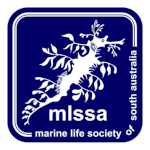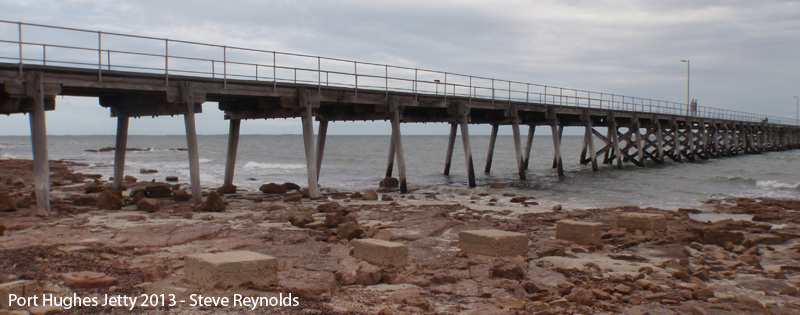Hank van der Wijngaart, President of the Scuba Diver Federation of SA went diving at the Port Hughes jetty on Sunday 28th Dec 2008. He found a nudibranch on one of the jetty pylons* there.
* (I prefer to call them ‘piles’. Pylons go up, piles go down.)
Despite the surgy conditions there, he managed to take a reasonable photo of the nudibranch. Hank thought that it might have been a specimen of Hypselodoris infucata but wanted expert confirmation to be certain of his find.
When he arrived back home that night, Hank couldn’t wait to email his nudibranch photo off to Neville Coleman’ World of Water for expert identification. Here is the message that he sent along with his photo: –
“Hi Neville, Went diving at Port Hughes jetty, western side of Yorke Peninsula on Sunday, 28th Dec. (34o04’37.74″S 137o32’37.68″ – not sure if you have dived this area of South Australia.) Water was surging a bit so wasn’t able to stabilise very well so this is the best shot I could take. I have never seen it before and was wondering if this is a specimen of Hypselodoris Infucata. Photo was taken with a Canon Powershot A540 at 11:45am on one of the jetty pylons. It was the only specimen I was able to find. Photo details: speed 1/40, f3.2 focal length 8mm, 180 dpi, resolution 2272 x 1704 at 24bpp.”
Neville’s reply came back as follows: –
“Dear Hank, Yes, I have dived the jetty, it’s a great dive and lots of great species there.
FAMILY: Chromodorididae
COMMON NAME: Painted Hypselodoris
SCIENTIFIC NAME: Hypselodoris infucata
REMARKS: Found in South Australia, Western Australia, Northern Territory and northern Queensland, this species is widely distributed from the Red Sea to Okinawa. It grows to 45 mm and feeds on sponges Dysidea sp. The species is very variable.
See page 179/1,2,3,4,5. “Nudibranchs Encyclopedia”*.
Best wishes, Neville”
Hank says, “When (I) chased this further, I discovered that it is found commonly in the tropical areas and found in Spencer gulf because this gulf tends to be warmer than other parts of the southern ocean so is able to survive quite well.”
* There are also three photos of the species on page 80 of Neville’s book “1001 Nudibranchs”. One was taken at Edithburgh, one at Fremantle and the other one in Bali. There are also a couple of photos on page 161 in Karen Gowlett-Holmes’ book “A field guide to the marine invertebrates of South Australia. Karen says that the species is widespread in the tropical Indo-Pacific and mostly found in SA from late spring to autumn.
Congratulations to Hank on his discovery. His photo may be a worthy addition to our Photo Index.


According to Wikipedia, “Neville Coleman OAM was an Australian naturalist, underwater nature photographer, writer, publisher and educator.” Born in 1938, Coleman started scuba diving in 1963, exploring Sydney Harbour. He was inducted into the International Scuba Diving Hall of Fame In 2007. He was awarded the Medal of the Order of Australia (OAM) for ‘service to conservation and the environment’ in 2011. He died on 5th May 2012.
Further details about Neville Coleman, including some video footage about/featuring him, can be found at http://nudibranch.com.au/neville_coleman_marine_life.html .